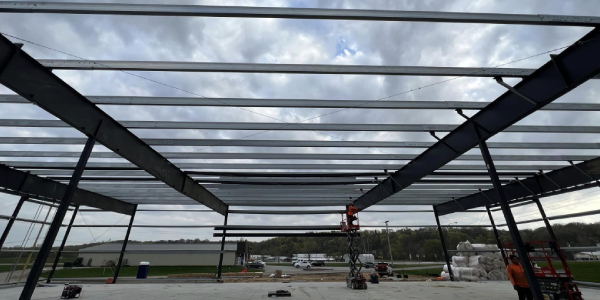Dollars & Sense

By Brandon Strawder, The RIDGEPRO®.
What are worker injuries really costing your business?
Roofing is acknowledged to be one of the most hazardous tasks in construction.
- The Bureau of Labor Statistics tracks injuries and fatalities in the workplace. In 2021, roofing and construction trades had 726 fatalities. The fatality rate for the roofing sector was 59 per 100,000 workers, an increase over 2020.
- The CDC states that 150,000 Americans need medical treatment each year due to roofing related accidents. This includes professional roofers as well as Do-It-Yourselfers.
- The National Safety Council notes the overall costs of workplace injuries (including roofing accidents) at $163.9 B in 2020 including wage and productivity losses, medical expenses and administrative outlays.
Did you know? It takes a little over a second to fall 10 feet.
Many factors contribute to roofing falls including loss of balance, extreme heat or cold, slippery conditions, collision with another worker, interactions with equipment or loss of situational awareness. Steep-slope roofs only compound the problem but it is foolish to believe that a low-slope roof presents little or no danger.
When a fall occurs on a roofing job, all hands immediately turn to the rescue effort. Work stops. The roofer, if wearing fall-arrest equipment, may need to be brought to the ground safely. Even if there is no injury, the crew has been shaken, the rhythm of the day disrupted. In many cases, medical treatment is necessary or a trip to the emergency dept ensues. On the worst possible day, a worker dies.
As the weeks go on, the entire company shares in the pain of the fall and the direct economic impact spreads:
- Work on the job must often stop while the cause of the fall is determined, equipment is checked, and inspections by insurance companies or regulators are completed. The job supervisor will need to spend extra time dealing with paperwork.
- The crew many need to work overtime or temporary worker(s) may be required. A crew under pressure is a crew more prone to injury.
- While insurance pays for the worker’s injuries, the company’s claim history is updated, and a potential rate increase is a possibility on renewal. Companies with repeated accidents/claims can be dropped or not renewed by the carrier.
- Tools and/or equipment damaged in the accident may need to be ordered and replaced. Sometimes, even undamaged equipment involved in the incident will need to be removed from service during any investigation.

Hidden costs
In addition to the direct costs of a fall, hidden costs can be equally disruptive to a closely knit crew and company. After a serious injury to a fellow worker, returning to the worksite can be distressing to the crew. The greater the effect is on co-workers. Morale can plummet as workers re-hash the incident and question their own chances of a fall. Damage to the company’s reputation in the marketplace cannot be taken lightly. Word spreads fast and not always accurately. By the time a story has been retold a few times, future contracts can be in jeopardy. Potential workers can be reluctant to sign on with a company whose reputation for safety has been degraded by a serious accident.
Prevention is the best remedy
Preventing falls and other workplace accidents simply makes sense. The solution for any company and every jobsite begins with planning. Safety considerations MUST be a part of any job prep. Where will equipment be stored when not In use? What is the plan for ladder/scaffolding safety? What is the optimal number of workers onsite? Is personal safety equipment available and easy to use? Who is in charge of making sure that safety protocols are followed? What is the rescue plan in case of an accident?
Training is key to a safe worksite. A “morning huddle” takes only a few minutes but gives the job supervisor an opportunity to remind the crew about safety procedures and address any hazards specific to the site. Workers at all levels must be encouraged to notice safety issues and report them to supervisory personnel. Roofing safety is a team sport involving everyone in the company including those who work in the office as well as those in the field. When all factors surrounding an accident are considered, it’s clear that safety just makes sense.
Learn more about the RIDGEPRO in their RoofersCoffeeShop® Directory or visit www.theridgepro.com.
Sources: Bureau of Labor Statistics, CDC, Center for Construction Research and Training, Economic Policy Institute, National Safety Council





















Comments
Leave a Reply
Have an account? Login to leave a comment!
Sign In